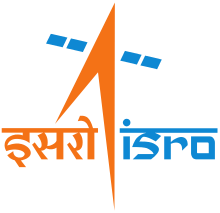SCE-200
The SCE-200 is an Indian, under-development, liquid-fuel rocket engine, burning liquid oxygen (LOX) and RP-1 kerosene in an oxidizer-rich staged combustion cycle. This engine is expected to power Indian Space Research Organization's upcoming Unified Launch Vehicle (ULV) and Reusable Launch Vehicle (RLV).[5] It is being developed by the Liquid Propulsion Systems Centre, a subsidiary of ISRO. But before that it will be tested on a GSLV Mk III by replacing the L110 stage powered by the Vikas engine with an SC-200 stage powered by SCE-200 engine and a 200 tonne propellant load.[6][7][8][9]
| Country of origin | India |
|---|---|
| Designer | LPSC, Indian Space Research Organisation |
| Manufacturer | Godrej Aerospace, Godrej & Boyce Ltd[1][2] |
| Application | Main engine |
| Status | Under Development |
| Liquid-fuel engine | |
| Propellant | LOX / RP-1 |
| Mixture ratio | 2.65[3] |
| Cycle | Staged combustion |
| Configuration | |
| Chamber | 1 |
| Performance | |
| Thrust (vac.) | 2,030 kN (460,000 lbf)[4] |
| Thrust (SL) | 1,820 kN (410,000 lbf)[4] |
| Throttle range | 60% to 105% [3] |
| Chamber pressure | 18 MPa (2,600 psi)[3] |
| Isp (vac.) | 335 seconds (3.29 km/s) |
| Isp (SL) | 299 seconds (2.93 km/s) |
| Dimensions | |
| Dry weight | ~2700 kg |
History
On June 2, 2005, India and Ukraine signed the Framework Agreement between the Government of Ukraine and the Government of the Republic of India on Cooperation in the Peaceful Uses of Outer Space, which would enter in force on February 15, 2006.[10] As per unconfirmed information obtained by WikiLeaks this contract involved the transfer of blueprints for a rocket engine by the Yuzhnoye Design Office.[11][12][13]
According to official press release on March 26, 2013 by Ukrainian Ministry of Economic Development and Trade, development of a rocket engine for Indian launch vehicles initiated in 2006 under a joint Indian-Ukrainian project named “Jasmine”[14][15][16][17][18]
During May and June 2015, ISRO and Roscosmos signed a wide-ranging Memorandum of Understanding for cooperation in space.[19] A. S. Kiran Kumar, Chairman of the ISRO, stated that one of the first benefits would be the availability of Russian test stand for initial testing of the SCE-200, while the Mahendragiri semi-cryogenic test stand being built. The engine is a part of the ₹1,800 crore (US$250 million) semi-cryogenic launch vehicle program, which would be capable of placing 6,000–10,000 kilograms (13,000–22,000 lb) in GTO.[19][20][19]
In 2017, Ukrainian firm Yuzhmash was contracted by ISRO to conduct tests on critical components of SCE-200. First stage of contract is reportedly complete and tests are expected to be completed by 2019.[16][21][22] The engine continues to be in development stage with a target date of 2022 Testing and significant progress will be made only after completion of Gaganyaan.[23]
See also
- Liquid Propulsion Systems Centre
- Yuzhnoye Design Office
- Geosynchronous Satellite Launch Vehicle Mk III
- RLV-TD Reusable Launch Vehicle Technology Demonstration
- Unified Launch Vehicle
- RD-120 – Russian rocket engine on which the SCE-200 is supposedly based.
- RD-810 – Ukrainian rocket engine with very similar characteristics.
- RD-170
References
- M Ramesh. "Godrej Aerospace to make semi-cryogenic engines". The Hindu Business Line.
- "Archived copy" (PDF). Archived from the original (PDF) on 2015-12-08. Retrieved 2015-11-02.CS1 maint: archived copy as title (link)
- "Semi-cryogenic Propulsion". VSSC.gov.in. Retrieved 24 April 2019.
- "SCE-200 a liquid-fuel, staged combustion semi-cryogenic engine being developed by the Liquid Propulsion Systems Centre (LPSC) lab of ISRO". IITTEN. 2015-05-06. Retrieved 2015-08-10.
- "Space Transportation System - Semi-cryogenic Project". ISRO. Retrieved 2015-08-10.
- "Government of India, Department of Space, Annual Report 2015 - 2016" (PDF). 26 May 2016. Archived from the original (PDF) on 13 December 2016.
- Raj, Gopal (5 June 2017). "ISRO's heaviest rocket is ready but is it enough for the load that lies ahead?". The Ken. Retrieved 5 June 2017.
- "Post successful launch of India's heaviest rocket, ISRO sets its eyes on 10-tonne class payload launcher". NewIndianExpress. Retrieved 7 June 2017.
- "Annual Report 2016 -2017 (English) - ISRO". www.isro.gov.in. Retrieved 2018-02-13.
- "Legal basis of Ukraine and India". Ministry of Foreign Affairs of Ukraine. Retrieved 2015-08-10.
- "UKRAINE: APPEAL FOR USG FORBEARANCE ON INDIA SPACE PROGRAM COOPERATION". WikiLeaks. 2007-09-07. Retrieved 2015-08-10.
- "UKRAINE: U.S. FEEDBACK ON SLV ENGINE COOPERATION WITH INDIA AND MIXER CASE". WikiLeaks. 2007-09-28. Retrieved 2015-08-10.
- "UKRAINE: YUZHNOYE AND ISRO PROPOSED ROCKET COOPERATION". WikiLeaks. 2008-05-21. Retrieved 2015-08-10.
- "Урядовий портал :: Україна розробляє ракетний двигун для індійської ракети-носія". www.kmu.gov.ua. Retrieved 2016-03-15.
- "Урядовий портал :: Ukraine designs rocket for Indian launch vehicle". www.kmu.gov.ua. Retrieved 2016-03-15.
- "Ukraine to test components of a powerful Indian rocket engine". www.russianspaceweb.com. Retrieved 2018-01-11.
- "Україна розробляє ракетний двигун для індійської ракети-носія". kmu.gov.ua. 26 Mar 2013. Archived from the original on 11 January 2018. Retrieved 11 Jan 2018.
- "Ukraine designs rocket for Indian launch vehicle". old.kmu.gov.ua. 26 Mar 2013. Archived from the original on 11 January 2018. Retrieved 11 Jan 2018.
- "Russian tie-up to boost ISRO's semicryogenic launcher plan". The Hindu. 2015-08-14. Retrieved 2015-08-14.
- "Heavy Lift Launcher". Vikram Sarabhai Space Centre. Retrieved 2015-08-14.
- "Ukraine expands industrial rocket building cooperation with south-eastern Asian countries". Retrieved 2018-01-11.
- Ramesh, M. "ISRO moves on, gears up to test semi-cryogenic engine in Ukraine". @businessline. Retrieved 2019-09-19.
- "Episode 90 – An update on ISRO's activities with S Somanath and R Umamaheshwaran". AstrotalkUK. October 24, 2019. Retrieved October 30, 2019.

